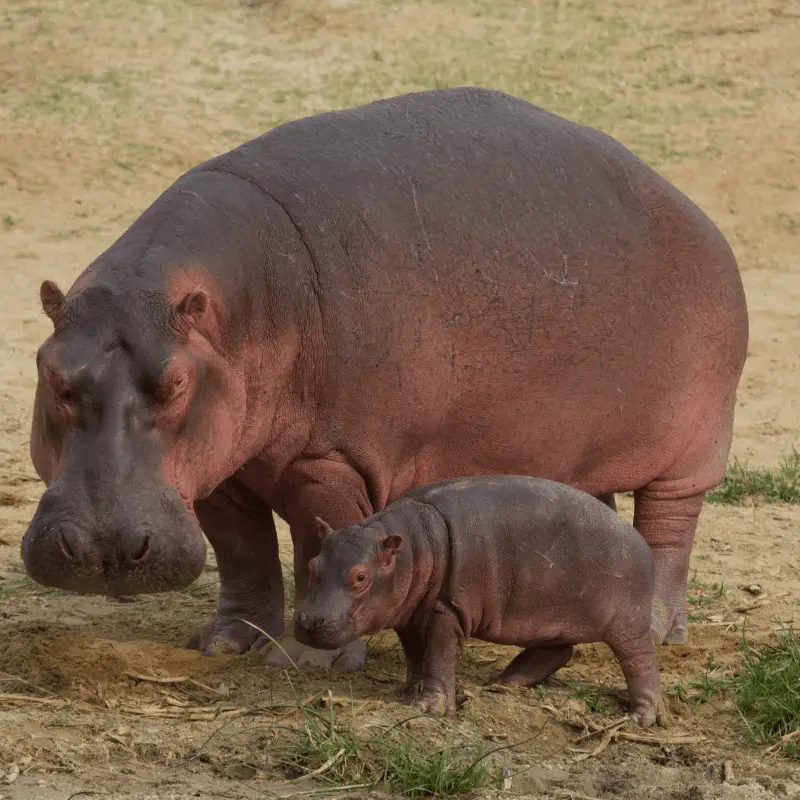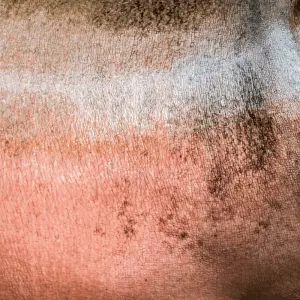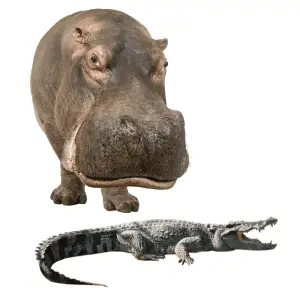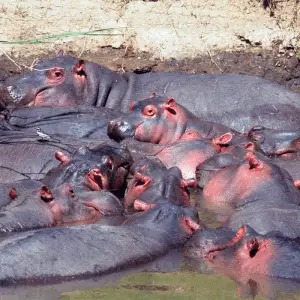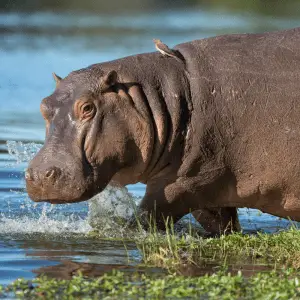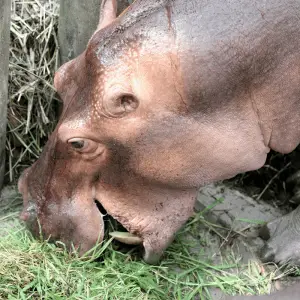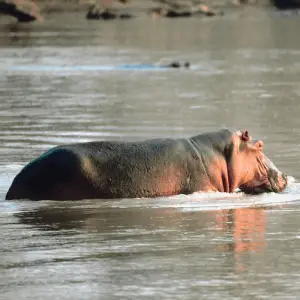The hippopotamus is one of the most popular wild animals around the world. From kids to adults, everyone loves these gigantic animals. They are also known as river horses or water horses.
The hippopotamus is an enormous semi-aquatic animal native to the Sub-Saharan region of Africa. It is one of the two species belonging to the Hippopotamidae family.
These amphibious semi-aquatic animals are the second-largest land animals after only the elephants.
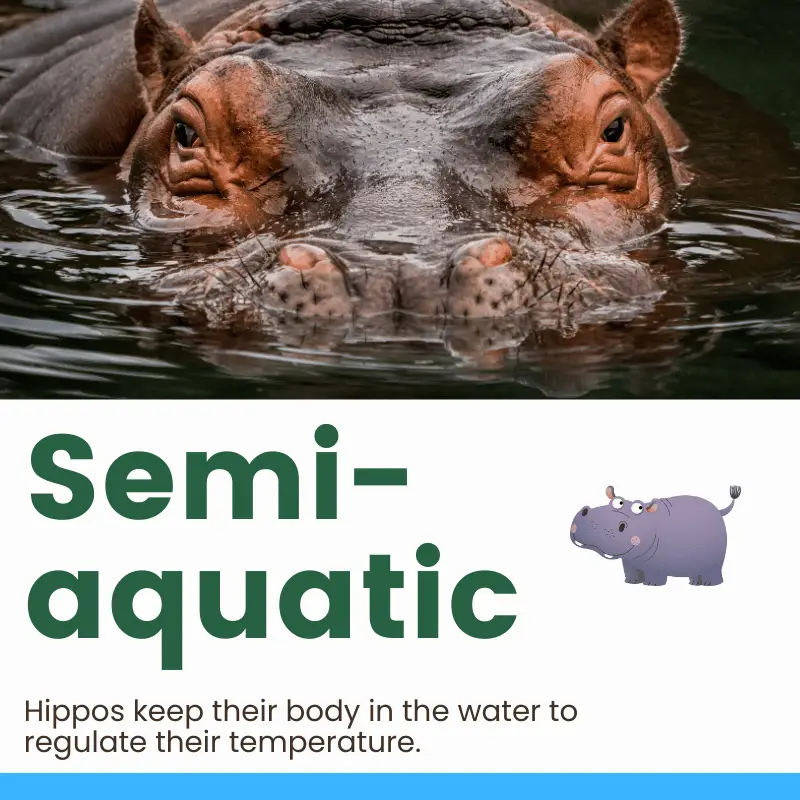
Thanks to their large size and precarious nature, these animals are primarily safe from almost every Predator. However, for a long time, humans have been hippos’ prime predators.
Currently, hippos can be seen in Eastern Central and some parts of Southern Africa. People hunt these animals for their hide, meat, and Ivory. In Africa, hippos are also hunted due to human-animal conflict.
Breed Overview
- Genus: Hippopotamus
- Species: Hippopotamus amphibious
- Diet: Omnivorous
- Weight: Male hippos weigh about 1500 to 1800 kg. Adult females weigh about 1300 to 1500 kg.
- Natural habitat: Swamp lake rivers
- Speed: 30 km per hour on land and 12 km per hour on the water
- Lifespan: 40 to 50 years
Appearance
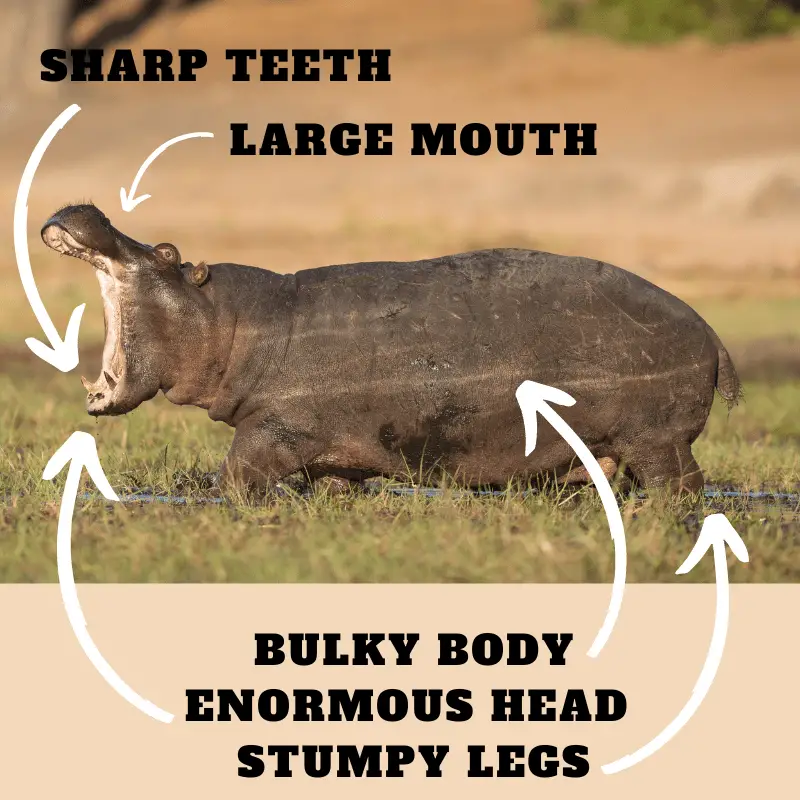
Hippos have bulky bodies, enormous heads, and short and stumpy legs. The male hippos are about 11.5 feet long, and the females are about 9 to 10 feet long. These animals have four toes on each foot and a short tail.
Hippos have a reddish-brown skin colour along with a pinkish underpart. The mouth of the hippopotamus is about half a meter wide. These animals have sharp lower-can ions that can be 12 inches long. These animals can open their Jaws about 180 degrees when fighting or threatening other animals.
Even though hippos are considered land mammals, they are semi-aquatic and well-adapted to water life. These animals’ ears, eyes, and nostrils are relatively high up in their heads. So, the animals can submerge their entire body while keeping a small portion of their head above water.
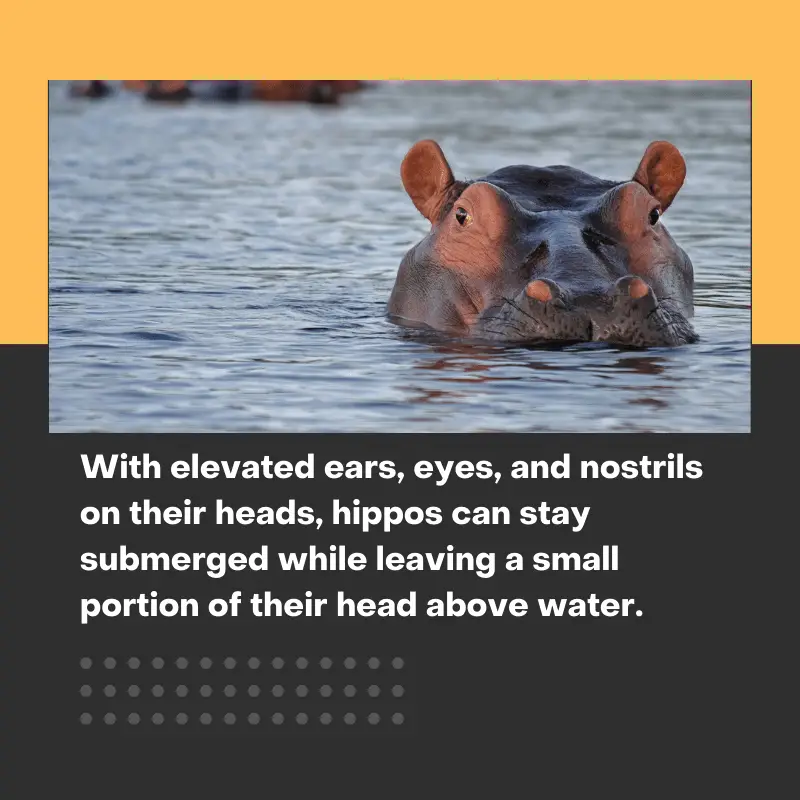
When these animals submerge underwater, they close their nostrils and ears shut to stop water from getting inside their bodies. The animals’ bones and bodies are so thick that hippos can walk underwater without any problem.
Even though these animals love to bask under warm sun rays, they can lose water rapidly. These animals can get dehydrated quickly without regularly dipping in the water bodies.
Sweat Glands
Hippos do not possess any sweat glands on their body; they also need to dip in the water to keep their body temperature under control. If these animals stay out of water for a long time, their skin glands start to secrete a reddish, liquid solution, creating a thick protective layer on their skin. This reddish or pinkish liquid is why people think hippos sweat blood.
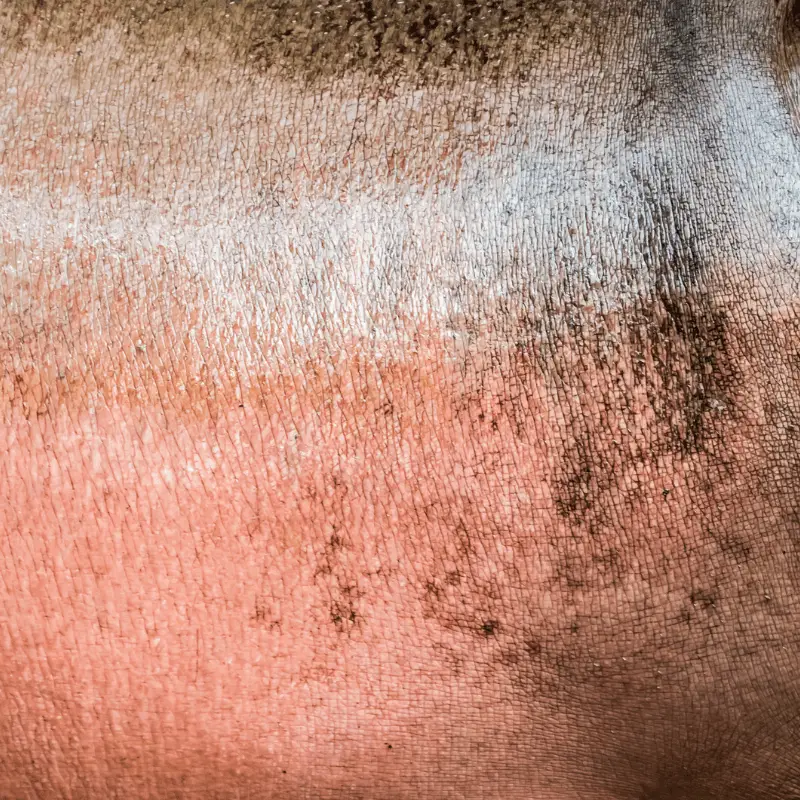
Behaviour
Hippos love to live in the shallow parts of the rivers on lakes. They can enjoy sleep while keeping their body in semi-submerged condition. During the daytime, as many as 150 hippos stay in a water body during the summer. If there is a chance of drought or famine, these animals are known to start overland migration. This kind of situation leads to the untimely death of many hippos.
Hippos are very aggressive and often use their long and sharp incisors and canine teeth to attack.
Compared to their size, these animals consume a small amount of food. Hippos eat less because the hippo’s energy requirements are low, as they spend most of their time in the water.
Reproduction
Female hippos are known as cows. Females get sexually mature from seven years of age. Male hippos, on the other hand, have become sexually active since six years of age.
In captivity, male and female hippos become sexually active much earlier. Captive hippos are usually 3 to 4 years of age and are known to become sexually active. Dominant bulls over 20 years of age are known to initiate most of the meetings compared to younger ones. Female Hippos can produce a young every two years.
Hippo bulls are known for segregating and monopolising certain areas of the lakes or rivers for mating. Most of the time, the dominant hippos tolerate the subordinate males, especially if these animals do not try to breed. Hippos can retain their meeting territory for a decade or longer.
During the dryer seasons, the cows tend to gather up in these selected areas of the water bodies. It is the time when most of the meetings take place. During this time, you can witness a rare eruption of battles among the bulls if they invade the territory of another one.
Hippos often engage in mating battles in which they can slash the flesh of other hippos with their sharp incisors. Even though Hippo skin is quite thick, battle wounds during mating season can become fatal.
Baby Hippos
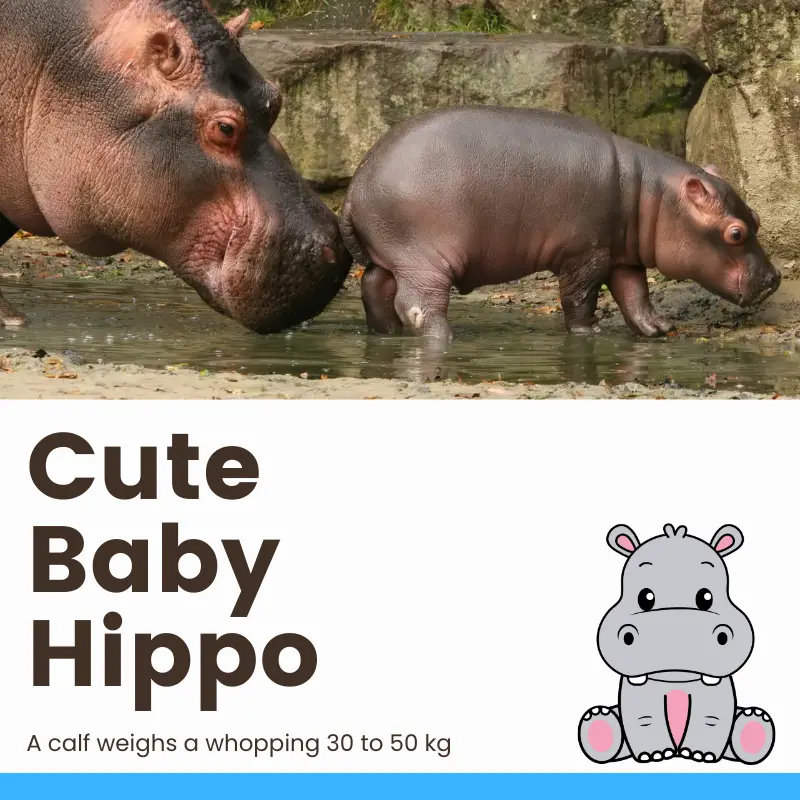
Hippos generally give birth to a single calf that weighs about 30 to 50 kg. Mother hippos have a gestation period of eight months, after which they give birth to the calf underwater.
The calf can feed both on land and underwater. It keeps its nostrils and ears closed when nursing underwater.
The baby hippo starts to eat some small amount of grass alongside their mother’s milk from 4 weeks old. The baby hippos are entirely weaned from the mother’s milk from six months old.
Even though baby hippos are not that small, they are pretty vulnerable to predators like crocodile lions and hyenas. After giving birth, cows form a strong bond with their babies, which they retain for a long time.
Even though the hippos live in schools, they do not create any permanent association with other hippos. However, a mother can keep close relationships with their babies.
Location
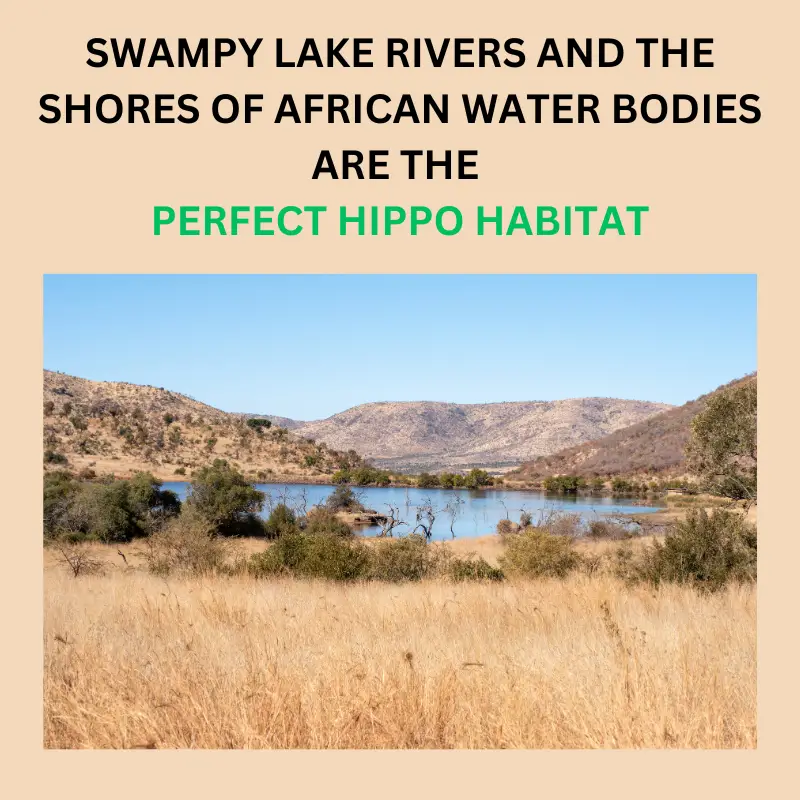
Hippos can be seen in East Africa, but you can spot them almost everywhere. Even though hippos are pretty common in Africa, the number of these animals decreases continuously throughout the continent.
While human-animal conflict is one of the main reasons for this, dwindling numbers of hippos poaching for Ivory are the main threats to this species. A population assessment 2008 indicated that around 126,000 149,000 hippos are left in the wild.

